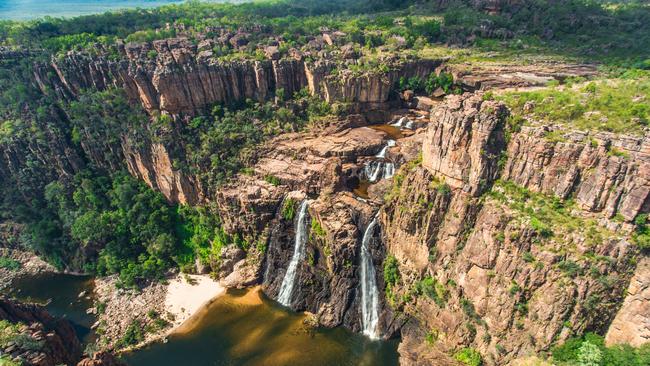New research gives a glimpse into Kakadu’s climate 65,000 years ago
ARCHAEOLOGISTS have been able to generate 65,000- year-old rainfall records from the Kakadu region after discovering ancient food scraps, and found that the region is the driest it has been since human occupation began.
Northern Territory
Don't miss out on the headlines from Northern Territory. Followed categories will be added to My News.
ARCHAEOLOGISTS have been able to generate 65,000- year-old rainfall records from the Kakadu region after discovering ancient food scraps, and found that the region is the driest it has been since human occupation began.
The research by the University of Queensland’s Anna Florin, released today, provides a glimpse into what the Kakadu region’s climate was like when people first occupied Australia.
It comes after a number of nutshells, commonly known as pandanus, were found during excavations in the Alligator Rivers region in 2012.
The nutshells are the leftovers of meals eaten by humans as long as 65,000 years ago.
“Using the scraps from meals eaten tens of thousands of years ago, we can tell a localised story of climate change and explore its effects on communities living in the Kakadu region through time,” Dr Florin said.
“The nutshells hold evidence in their composition for the amount of water available to them when they were growing, and can be used to understand past rainfall.”

MORE TOP NEWS
Australia Walking Co. proposes new 40km ‘Uluru Lodge Walk’ to replace climb after 2019 ban
Double trouble: Close encounters of the bloodcurdling kind as croc and shark cruise past each other
First look: $276 million Kakadu master plan revealed to restore Territory icon to its former glory
The research was done alongside Mirarr Traditional Owners in the Kakadu area at a site called Madjedbebe.
Combined with other archaeological evidence found at the site, the recent research shows the Kakadu region was probably a resilient area because of its climate — even during glacial periods.
“It allowed people to thrive during the driest spells in Australia’s history,” Dr Florin said.
“This included during the Last Glacial Maximum — a period of global aridity occurring between about 25,000 and 18,000 years ago — in which Australia’s arid zone dramatically expanded.
“We can now see the region would have allowed early Australians to thrive during long dry spells, perhaps also attracting communities from surrounding areas.”
Dr Florin said the research also showed that right now was the driest time Kakadu had experienced in that 65,000-year period.
“Kakadu is experiencing the driest time since humans first arrived in the country,” she said. “The region’s plants and animals are experiencing extreme hardships.
NT NEWS sizzling new deal: Get all your news for just $5 a month
“Feral animals, loss of biodiversity and disruptions to cultural landscape management, including vegetation burning, all pose increased threats to the health and wellbeing of the landscape and its Traditional Owners.”


